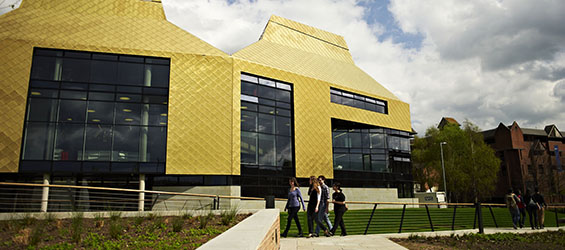Special collections
The Stuart Collection
The Stuart Collection contains over one-thousand books concerned with the period of history in which Britain was under Stuart rule (1603-1714). Largely bequeathed to Worcester City Library in 1900 by John Grainger, it includes several hundred books actually printed during the period, supported by a number of later volumes engaged in its study. There are many fascinating subjects covered within, from law to religion, politics, a strong focus on the civil war and even books of songs and idle gossip. Titles include books by authors Clarendon, Carrington & Walton. There are also books about Boscobel, Eikon Basiliska and the life of Milton and many works with contemporary engravings.
Many of the books in the collection are first and possibly last copies in existence making this an extremely valuable resource for those studying the period. Its importance is further enhanced by the secondary comments, ownership marks and sketches that grace their pages, much of which may be contemporary with the books publication.
Prior to finding its new home in The Hive, the Stuart Collection was housed in original Victorian cabinets within what was the main Librarians office at the City Library. In preparation for the move, the collection was cleaned and catalogued by a group of volunteers which has for the first time allowed the books to be added to the library database. This now means that researchers and the public from near and far will finally be made aware of this fantastic study resource, more accessible than ever with its move to The Hive.
If you would like to browse the titles within the Stuart Collection, please visit our library catalogue and perform an advanced search for classification> Stuart. When you have identified the books you would like to consult please speak to a member of staff at the Explore the Past desk on Level 2. Please note due to the age of many of the books all viewings must be performed in our original documents examination room within the 'access to original archives' opening hours.
John Grainger was a book seller in the City of Worcester with a keen interest in the Stuart Period. Through research within many of the books in the collection, Grainger wrote his own account of the Battle of Worcester which was donated to the City library. He was also a member of the Worcestershire Naturalists club and friend to one of the founding fathers Edwin Lees, correspondence between them can be found in the collection. John Grainger passed away at the end of the 19th Century, bequeathing a large proportion of his private collection to the City of Worcester Library.
Local Studies
Worcestershire Archive and Archaeology Service boasts one of the most extensive collections of books relating to Worcestershire's history and archaeology. It is now located at The Hive, which allows unprecedented access to this important resource in an open and welcoming environment.
Our large Local Studies library is a vital resource to anyone studying their locality, family history or wishing to add context to their archival research, whilst the Archaeology library is a comprehensive collection covering all periods and most types of sites. It includes collections of local, regional and national journals and is particularly strong in books on the Home Front in the Second World War.
The Palfrey Collection
The Palfrey Collection is an extensive compilation, bequeathed to the County Council by Alderman H.E.Palfrey. It consists of a rare selection of antiquarian studies; first edition volumes and books crucial to the study of Worcestershire.
The Stanbrook Abbey Collection
A collection of publications made by the Stanbrook Abbey Press. They are on closed access on level 4 and are catalogued.
The press founded at Stanbrook Abbey near Worcester in 1876 was unique: run by a religious community, rather than an individual or partnership, it stood at the interface between book design and religious belief.
Famously the press was associated in the early twentieth century with one of the great figures of English bibliography, Sir Sydney Cockerell; he in turn introduced the nuns to Emery Walker and C.H. St John Hornby.
The press enjoyed a golden age under the direction of Dame Hildelith Cumming, who was printer from 1955 until her death in 1991. With the encouragement of Dutch typographer Jan van Krimpen and the English designer John Dreyfus, Dame Hildelith developed a distinctive Stanbrook style: the use of characterful typefaces, expertly printed on fine hand-made papers; the deployment of white space to allow texts to ‘breathe’; and a liveliness achieved through coloured inks, calligraphic decoration and fine bindings.
David Butcher, the press’s bibliographer, summed up its achievement: ‘Collectively the books published by the Press… earn it a place as one of the world’s major private presses… The books are an enduring testament to the Benedictine aim of employing human talents to the glory of God.’

